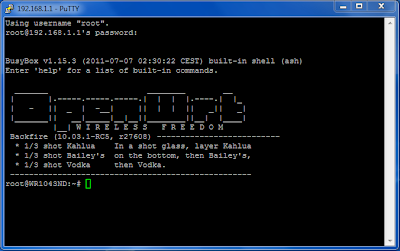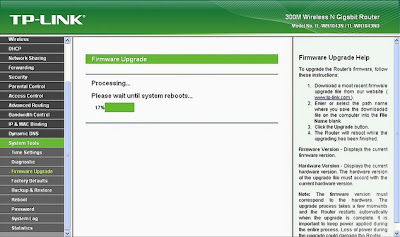We are living in the world of technology. Everyday we see new inventions and progress in the field of technology. There are many ways to get knowledge of computer e.g library, classroom, etc. Now a days we also see many website about computer information. I am also trying to convey knowledge of computer through this blog. Hope that you will like it.
Thanks. (A.G)
INTRODUCTION TO COMPUTERS.
Today, you can find computers almost everywhere. Microwave Ovens, automobiles, thermostats and even wristwatches contains computer chips. In fact, computers are so common in modern society that everyone is affected by computer technology to some extent.
A computer is an electronic device that processess data and converts it into information.
HISTORY OF COMPUTERS.
The history of computer starts about 2000 years ago with the birth of the abacus. it is shown in pic. wires with beads strung on them. when these beads are moved around, according to programming rules memorized by the user, all regular artihmetic problems can be done.
CLASSIFICATION OF COMPUTER
Computers come in many different sizes and ranges of power, and different types of computer systems have varying capabilities. Today's computer systems are classified into following categories:
Mainframe computer
Mainframe computers are used in large organizations like insurance companies and banks where many peopole need frequent access to the same data, which is usually organized into one or more huge database. Airlines use large mainframe systems for flight scheduling, reserving, ticketing and meeting a range of customer service needs. These computers are basically used in networked environment, as a single user can not utilize their full processing power. Best example of mainframe computers is IBM S/390.
Supercomputer
super computers are the most powerful computers and physically they are some of the largest. These systems are built to process huge amount of data and the fastest supercomputers. such as Cray T90 system, can house thousands of processors.
Super computer can cost tens of millions of the dollars and consume enough electricity to power dozens of home. Super computers are rare used only by large corporations, universities and high level agencies that can affort them because their these computers are most costly.
Minicomputers
Because of their small size these computers are called Minicomputers..These computers have high processing powre than microcomputers and also have less processing power than mainfram computers. these computers are less expensive than mainframe computers nad are ideals for organizations that could not afford mainframe. The HP 3000 is an example of minicomputers.
Microcomputers.
Microcomputer are also called personal computers. these are developed particularly for individual users. computer computers are less powerful as compared to minicomputers. Microcomputers have very low price so these machines are very popular. PCs are getting powerful day by day because of the development in technology. Microcomputers are available in markit in different style and models, i.e desktop, laptop and pocket computer etc.
COMPUTER COMPONENTS.
A computer is a device that accepts data nad processes it for some result based on a sequence of instructions. The sequence of instructins given to computer for manipulating data is known as a program.
There are two basic components of a computer system.
Computer Hardware
Computer Software
Today, you can find computers almost everywhere. Microwave Ovens, automobiles, thermostats and even wristwatches contains computer chips. In fact, computers are so common in modern society that everyone is affected by computer technology to some extent.
A computer is an electronic device that processess data and converts it into information.
HISTORY OF COMPUTERS.
The history of computer starts about 2000 years ago with the birth of the abacus. it is shown in pic. wires with beads strung on them. when these beads are moved around, according to programming rules memorized by the user, all regular artihmetic problems can be done.
CLASSIFICATION OF COMPUTER
Computers come in many different sizes and ranges of power, and different types of computer systems have varying capabilities. Today's computer systems are classified into following categories:
Mainframe computer
Mainframe computers are used in large organizations like insurance companies and banks where many peopole need frequent access to the same data, which is usually organized into one or more huge database. Airlines use large mainframe systems for flight scheduling, reserving, ticketing and meeting a range of customer service needs. These computers are basically used in networked environment, as a single user can not utilize their full processing power. Best example of mainframe computers is IBM S/390.
Supercomputer
super computers are the most powerful computers and physically they are some of the largest. These systems are built to process huge amount of data and the fastest supercomputers. such as Cray T90 system, can house thousands of processors.
Super computer can cost tens of millions of the dollars and consume enough electricity to power dozens of home. Super computers are rare used only by large corporations, universities and high level agencies that can affort them because their these computers are most costly.
Minicomputers
Because of their small size these computers are called Minicomputers..These computers have high processing powre than microcomputers and also have less processing power than mainfram computers. these computers are less expensive than mainframe computers nad are ideals for organizations that could not afford mainframe. The HP 3000 is an example of minicomputers.
Microcomputers.
Microcomputer are also called personal computers. these are developed particularly for individual users. computer computers are less powerful as compared to minicomputers. Microcomputers have very low price so these machines are very popular. PCs are getting powerful day by day because of the development in technology. Microcomputers are available in markit in different style and models, i.e desktop, laptop and pocket computer etc.
COMPUTER COMPONENTS.
A computer is a device that accepts data nad processes it for some result based on a sequence of instructions. The sequence of instructins given to computer for manipulating data is known as a program.
There are two basic components of a computer system.
Computer Hardware
Computer Software
Computer Hardware.
The physical parts of computers system that you can touch and feel are known as computer hardware. Computer can be divided into following hardware units.
- Input Unit
- Out put Unit
- System Unit
INPUT UNIT.
Input unit of a computer system consists of input devices. Due to the diverse nature of the data, variety of input devices exist to input data in different forms for example. keyboard is is used to enter textual data, mouse is used as a pointing device nad to trigger different commands, microphone is used to enter voice and scanner is used to enter image etc. Input unit of a computer may contain all or some of the above mentioned devices and even can have many other.
OUTPUT UNIT
Output unit of a computer system consists of output devices. As data presented to user can take variety of forms, therefore different output devices are needed e.g. monitor is used to display image and text on a screen, similarly printer is used to get output on paper and speaker are used to receive voice etc.
SYSTEM UNIT
System unit contains a number of components which are enclosed in casing. The casing have two different shapes i.e Tower casing and desktop casing. The most important component of the system is a circuit board called Mother board. All other components are attached with mother board. It is made up of silicon. Other parts of the system unit are hard disk, ram, floppy drive, microprocessor, vga card, sound cards, network card etc.
CPU (Central Processing Unit)
It is called microprocessor. Also it is called brain of computer. Many type of microprocessors are available in market. Pentium I, P II, P III, P IV, Duel Core, Core to Due, and now the latest technology is Core I 3, I 5, I 7 have launched. Processor's speed is measured in Mega Hartz. (MHZ)Hard Disk.
Operating system directly installed in disk called Hard drive. It stores information faster than any other drive. Installation or Information stored in a hard drive is measured in unit called bytes. The upgrade values of bytes are as follows.1000 bytes = 1 kb (kilobyte)
1000 kb = 1 Mb (megabytes)
1000 mb = 1 Gb (gigabytes)
1000 gb = 1 Tb. (Terabytes)
FLOPPY DRIVE.
It is also called a: drive. a floppy can store 1.4mb of information. Floppy is no longer popular among people because of low capacity.
CD ROM
Cd rom drive is used for CD (Compact disk). A cd has more space than a floppy disk. A simple cd rom is used to read the cd. Cd writer is used to write data on cd.
DVD ROM/WRITER
A dvd (Digital versatile disk) has much more space than a cd. quality of a dvd is also much better than any cd. dvd writer is used to record text data or movies on a dvd disk.
RAM. (Rendam access Memory)
Ram is also called extended memory. it increases the bus speed of computer.
POWER SUPPLY.
Power supply is found in every system. it receive 220 v Ac and convert it into multiple dc volts. Man port of power supply provide DC current to mother board. It is connected to Mother board. similarly many other ports are found in power supply. these ports are used to provide current Hard drive, Cd rom, Floppy drive etc. Yellow cable of power supply emits 12V DC and red cable emits 6 V DC. Power supply which was used in P.I or 486 computers is called AT supply and supply used in P2, P3, P4, I3, I7 etc is called ATX supply. ATX supply runs through motherboard.


























